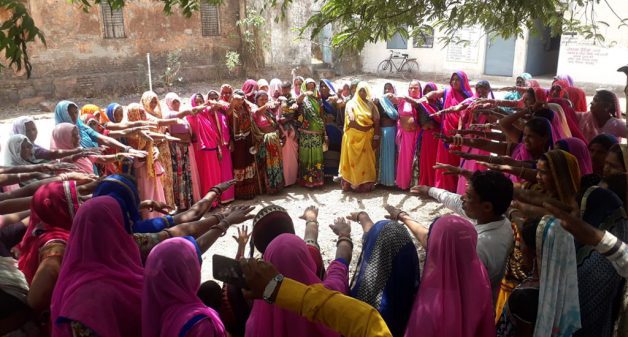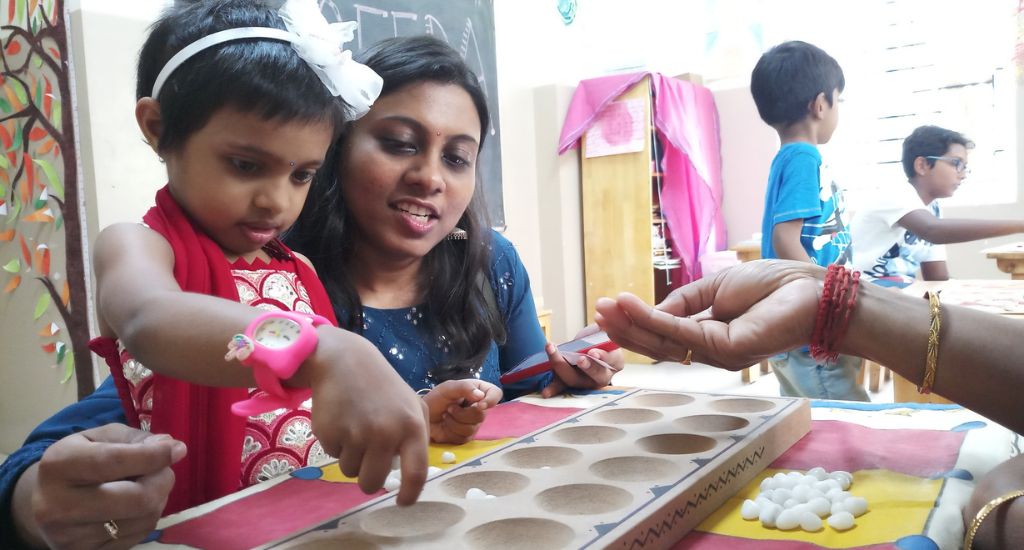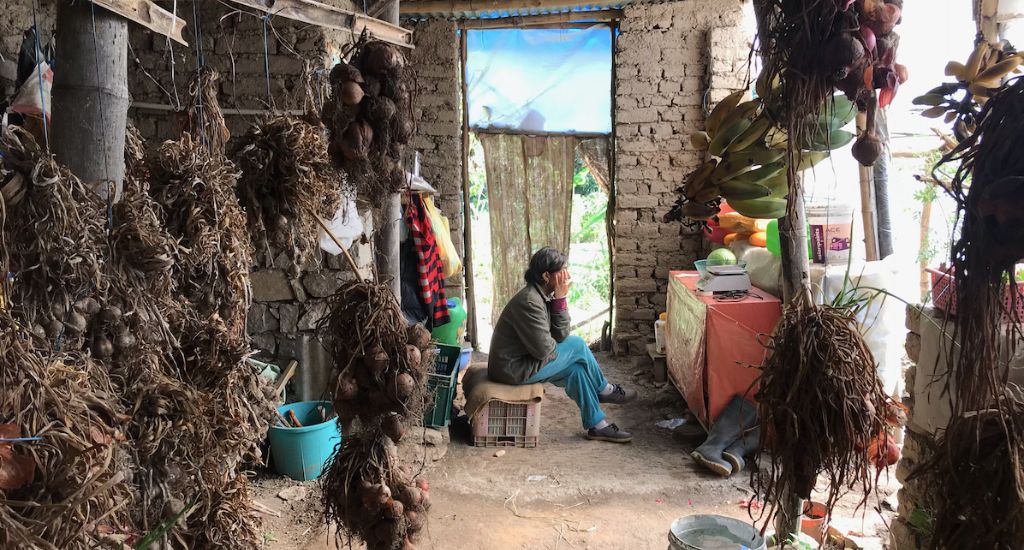In the first part of this story, we had highlighted the reasons why a community-led initiative for local development could produce superior outcomes, if appropriate administrative support from Panchayati Raj institutions (PRIs) and local administration was available. In this part we provide concrete examples of how this has happened and then discuss the concomitant procedural changes needed.
In Barwani district of Madhya Pradesh, community-led efforts made a huge impact during the second wave of the COVID-19 pandemic. The district was at the bottom, showing the worst positivity rate at the start of the second wave. Within the district, administrative blocks Rajpur and Sendhwa, bordering Maharashtra showed even worse positivity results. The situation was almost similar in Jhabua district.
But collectives consisting of members drawn from the community worked along with the local administrative bodies, addressing the issues methodically. The combined efforts effected a turnaround of the pandemic situation in the districts.
Locality approach
Aided by the field workers of civil society organizations (CSOs), the communities – organized in self-help groups (SHGs) – worked with panchayats for comprehensive ‘locality approach’ – mass campaigns, home isolation, registration on CoWIN, and vaccination drives. In addition, they ensured access to various insurance schemes and other entitlements such as Pradhan Mantri Jeevan Jyoti Bima Yojana (PMJJBY), Antyesti Yojana, Anugrah Sahayata Yojana and Pradhan Mantri Sahayata Rashi Yojana.
The community worked with the block administration including the sub divisional magistrate (SDM) office, Janpad office, Integrated Child Development Services (ICDS) and the health department, to ensure capacities in frontline health facilities. With such intense engagement of the community with the gram panchayat and the local administration, Barwani improved its ranking within the state. Within a very short time it became the best district, with the lowest positivity rate.
Lasting model?
The above range of tasks was handled by community-based organizations (CBOs) such as SHGs and their village organizations. In addition, the CBOs focused on ensuring livelihood support in getting the villagers jobs under Mahatma Gandhi National Rural Employment Guarantee Scheme (MGNREGS).
Village organizations with support from village panchayats are combating COVID-19 like none. Also, PRIs and CBOs are mobilizing medicine kits for all COVID-19 positive persons. The state government has issued guidelines for use of funds given to panchayats under the 14th Finance Commission as resources for the efforts of the panchayats and the blocks.
We understand centralized decision making increases the burden of program implementation. The approach here has demonstrated a different model. It is interesting to explore whether such intense collaboration of the CBO with the local village panchayats and the local administration was possible only during an intense and widely felt threat of a pandemic or can be affected in ‘normal’ times as well.
This question is better understood when one notices that this level of intensity of engagement and collaboration between CBOs, PRIs and the local administration did not come about in other districts of the Madhya Pradesh. Why then did this happen in Barwani or Jhabua? This takes us to the set of issues connected with how this collaboration can be brought about.
Procedural measures
We believe that this became possible because concomitant procedural measures were put in effect. A Block Level Coordination Committee (BLCC) or Block Level Task Force was set up in the district with CSOs, line departments. The convener of this committee was a person deeply engaged in working with the CBOs DPM-SRLM or someone on administrative side like CEO (Janpad) or SDM. The BLCC had its members drawn from Janpad office as well as elected PRI representatives.
The committee meetings were minuted and action taken was discussed in the next meeting. The district administration supported the creation and management of the affairs of the BLCC. The district collector was very keen to reverse the poor rank of the district and hence monitored the discussions and decisions of the BLCC, holding the Janpad CEO (equivalent to BDO elsewhere) responsible for making things happen as per the decision of the BLCC.
These procedural changes are critical if one is to ensure that community participation becomes meaningful and effective. In the absence of a procedure which can be relied upon, to match it with the usual business practices in the government on the one hand, and to provide both regularity as well as weight to the voice of the community on the other, community engagement would not be possible.
The usual result is that community participation is a much-touted term, often left at the level of empty rhetoric. The fact that the BLCC in Barwani and Jhabua became effective in matters such as MGNREGS, and did not restrict itself to COVID-19 work shows that once a procedure is set in motion, it can be used in non-emergency situations as well.
Synergetic development
For making the CBO-led development become a reality, one needs to train, hand-hold and build knowledge base of community members and ignite their agency. Simultaneously one needs to work intensely with formal institutions like the PRI for the two sets of institutions to work together.
Creatively we have to examine how the existing self-help group – village organization – cluster level federation (SHG-VO-CLF) can become co-terminus with politico-administrative locality framework like tola – revenue village – panchayat – block. A community structure of high congruence with local democracy frame will bring natural synergies. The 15th Finance Committee’s financial award to PRIs and specific guidelines in states like Madhya Pradesh enables such CBO-PRI. If India is to achieve its goals by 2030, we need to build a mechanism for effectively localizing the SDGs — one that leverages and integrates the social capital that exists in women’s collectives, with the local self governance of the Panchayati Raj system.
The power of community collectives to be a strong voice of the demand side balanced with PRIs and response from local administration is very important; equally important is vestment of local leadership particularly that of youth. Women collectives seem to have engaged with entrenched interests of caste, patriarchy, and wealth, women collectives challenge norms, unequal social relations and engage with local leadership, creating conditions for social equality, and ultimately, paving the way for effective local self governance.
Creation of collectives and strengthening PRIs and efforts to make them work in tandem have taken place in many districts. However, this procedural introduction in the district and block level development administration is new, though this too was tried on multiple occasions – notable ones include Community Based Convergent Services about two decades ago and the recent Mission Antyodaya Framework for Implementation.
A slightly different variant is in Transformation of Aspirational Districts – in all cases a people-public compact is being tried. One challenge in these procedures taking life is distance from point of impact i.e., households or villages.
The other thing that tends to be missing is to complement them with introduction of administrative procedures which formalize the mechanisms of the collaboration and invoke the active engagement of the local administration in a compelling manner.
Strengthening community collectives
One can create coordination committees as has been done in so many other instances. However, if the convening of the committees is left to the office of the district or sub-divisional administrative offices, it can easily get lost in the administrative clutter.
Just as the District Level Credit Committee is convened by the lead bank and hence functions irrespective of the priorities of the district administration, a coordination committee to be convened by an officer of the State Rural Livelihoods Mission (or similar agency) whose job takes one every day to engage with CBOs, would ensure that these meetings happen and the participation of CBOs becomes real.
To summarize, locality-based approach, a convergent community-local government compact is fundamental driver to regenerative resilient transformative change across different socio-economic dimensions, governance issues, addressing climate induced stress, etc.
Central to this approach is building strong vibrant community collectives, for example SHGs or micro mutual-help solidarity groups of women, constitutionally mandated local self-governance bodies (panchayats), traditional communitarian systems like caste/jati panchayat, or other relevant collectives like forest protection committees (FPCs).
These then need to be involved in newly created procedures that require periodic and mandated convergence meetings with the PRI and the local administration. The locality approach is central to community-centric solutions engagement: keeping people and communities as the focus, building relationships, focusing on and developing strengths, realizing aspirations and ensuring truly community-led approach.
The approach outlined in this two-part article makes live the SDG Goal 17 (Strengthening Means of Implementation and Partnership) a cross-cutting goal in localized context.
[This article has been updated by author]
Anish Kumar is part of the lead team at Transform Rural India Foundation. He began his career at PRADAN. He has a postgraduate degree in forest management. Views are personal.



